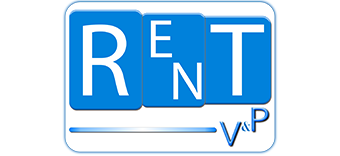Balance Sheet Definition & Examples Assets = Liabilities + Equity
There may be cases whereby a provider of utilities will require a deposit from a business prior to the provision of service. In this case, the business will record this deposit as an asset on its balance sheet instead of charging it to expenses. This implies that the expenses become a part of a cost pool which is then divided up in accordance with the units that are produced during the billing period. The expenses that are tied to the units that are not sold are usually listed as inventory assets, and not immediately listed as an expense. The balance sheet is a very important financial statement for many reasons.
Larger grocery chains might have multiple deliveries a week, and multiple entries for purchases from a variety of vendors on their accounts payable weekly. We now return to our company example of Printing Plus, Lynn Sanders’ printing service company. We will analyze and record each of the transactions for her business and discuss how this impacts the financial statements.
Assets
The amount of treasury stock is deducted from the company’s total equity to get the number of shares that are available to investors. This article comprehensively covered the accounting treatment, disclosure, recording, recognition, and appropriation of retained earnings for any business entity. We hope it will help you understand the purpose and use of the retained earnings in any business entity.
- In other words, the utility bill will be clinging to the units produced.
- Notes payable may also have a long-term version, which includes notes with a maturity of more than one year.
- Sometimes a separate statement for the recording of retained earnings is also prepared.
- This is posted to the Cash T-account on the credit side beneath the January 18 transaction.
This journal entry records a debit for utilities expense account which represents the cost to the business. Under accrual accounting, your income statement should report the amount for the utilities used during the period of the income statement. The utility bills tell you the cost of the gas and electricity used between the meter reading dates appearing on the utility bill.
Create a free account to unlock this Template
If there is an amount that should be charged that is applicable to the previous month, it is charged to the current month. The balance sheet, lists the company’s assets, liabilities, and equity (including dollar amounts) as of a specific moment in time. That specific moment is the close of business on the date of the balance sheet.
Is utilities a current asset?
Unbilled revenues are included within Receivables and Restricted receivables of variable interest entities on the Consolidated Balance Sheets…. Accordingly, the receivables sold are not reflected on https://kelleysbookkeeping.com/ the Consolidated Balance Sheets of Duke Energy Ohio and Duke Energy Indiana. The statement of cash flows shows the cash inflows and cash outflows from operating, investing, and financing activities.
Owner’s Equity
We will use the Cash ledger account to calculate account balances. When calculating balances in ledger accounts, one must take into consideration which side of the account increases and which side decreases. To find the account balance, you must find the difference between the sum of all figures on the side that increases and the sum of all figures on the side that decreases. The additional paid-in capital refers https://business-accounting.net/ to the amount of money that shareholders have paid to acquire stock above the stated par value of the stock. It is calculated by getting the difference between the par value of common stock and the par value of preferred stock, the selling price, and the number of newly sold shares. Treasury stock refers to the number of stocks that have been repurchased from the shareholders and investors by the company.
Balance sheets, like all financial statements, will have minor differences between organizations and industries. However, there are several “buckets” and line items that are almost always included in common balance sheets. We briefly go through commonly found line items under Current Assets, Long-Term Assets, Current Liabilities, Long-term Liabilities, and Equity.
After paying dividends, the remaining value is added to the balance of retained earnings continuing from previous financial years. The retained earnings recorded in the company’s balance sheet are part of the entity’s book value. Under the cash https://quick-bookkeeping.net/ basis of accounting, the amount recorded relates to the cash paid within the period for the indicated items. Thus, the cash basis relies upon the receipt of a supplier invoice, and still only records the expense when the invoice has been paid.
This account may or may not be lumped together with the above account, Current Debt. While they may seem similar, the current portion of long-term debt is specifically the portion due within this year of a piece of debt that has a maturity of more than one year. For example, if a company takes on a bank loan to be paid off in 5-years, this account will include the portion of that loan due in the next year.

Lascia un Commento
Vuoi partecipare alla discussione?Sentitevi liberi di contribuire!